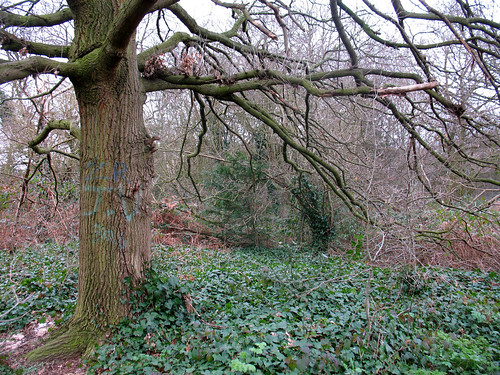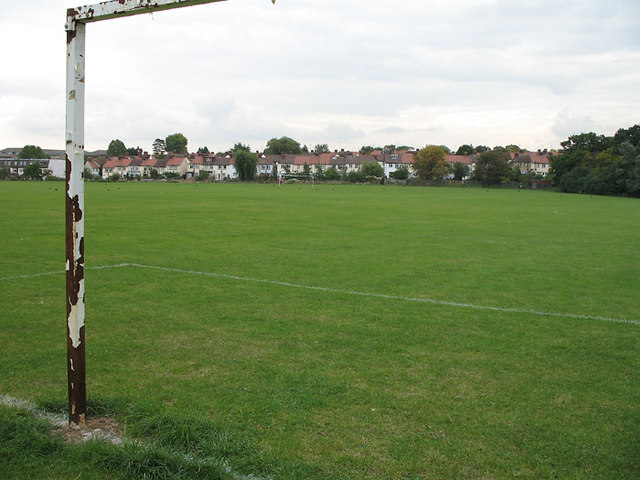
The March of the Guards to Finchley, also known as The March to Finchley or The March of the Guards, is a 1750 oil-on-canvas painting by English artist William Hogarth, owned by the Thomas Coram Foundation for Children since 1750 and now housed at the Foundling Museum. 

Hogarth was well-known for his satirical works, and The March of the Guards to Finchley has been said to have given full scope to this sense of satire; it was described by Hogarth himself as "steeped in humour".
finchley common where the guards awaited the scots
The painting is a depiction of a fictional mustering of troops on the Tottenham Court Road to march north to Finchley to defend the capital from the second Jacobite rebellion of 1745, which was part of a series of uprisings that had been occurring since the late 17th century and were aimed at returning the Stuart Dynasty to the throne after the Glorious Revolution of 1688. It portrays the soldiers in a humorous light, placing exaggerated emphasis on their lack of training and respect for discipline.
The March of the Guards to Finchley was originally intended to be a gift to the incumbent King of England, George II. However, George II was insulted by the apparent jab at his best troops, and rejected it when it was offered to him. Upset at the King's spurning of his work, Hogarth opted to change the engraving and present the painting instead to the King of Prussia, Frederick II, who, being known for his skills as a soldier rather than an artist, was reportedly much more satisfied with the gift.
whats left of finchley common where the guards waited for the scots,glebelands

whats left of finchley common where the guards waited for the scots,glebelands
Charles Edward Stuart was the remaining member in the House of Stuart, the line of descendants of James II, in 1745, when he headed the Second Jacobite Rebellion.The Jacobite risings were a series of rebellions affecting all of the British Isles except for Wales and that occurred between 1688 and 1746, four years before the painting of March of the Guards to Finchley. Centred on attempts by Jacobites to restore James II and his descendants, the House of Stuart, to the throne, there were two major uprisings, referred to as the "First" and "Second" "Jacobite Rebellions" respectively, the first having taken place in 1715 and the second thirty years later in 1745.
once part of finchley common
This painting shows a fictional incident during the second rising.

once part of finchley common
This painting shows a fictional incident during the second rising.
The "'45" was the product of the disappointment of Charles Edward Stuart, the exiled Jacobite pretender, with the French's unwillingness to invade England to restore the House of Stuart to power. In 1744, Charles decided to finance the military and social costs of an uprising, believing that he would be able to take the kingdom. With the support of various Scottish Highland clans, Stuart was initially successful. The rebels defeated government forces at the Battle of Prestonpans, and captured Edinburgh. The Stuart army invaded England, passing through Carlisle and reaching Derby on 4 December. However, promised support from France failed to arrive, and, in the absence of an English popular uprising, Charles assented to the demand of his Council of War to return to Scotland. Eventually, the Stuart army was comprehensively defeated at Culloden Moor on 16 April 1746.
With the support of various Scottish Highland clans, Stuart was initially successful. The rebels defeated government forces at the Battle of Prestonpans, and captured Edinburgh. The Stuart army invaded England, passing through Carlisle and reaching Derby on 4 December. However, promised support from France failed to arrive, and, in the absence of an English popular uprising, Charles assented to the demand of his Council of War to return to Scotland. Eventually, the Stuart army was comprehensively defeated at Culloden Moor on 16 April 1746.
prestonpans
 With the support of various Scottish Highland clans, Stuart was initially successful. The rebels defeated government forces at the Battle of Prestonpans, and captured Edinburgh. The Stuart army invaded England, passing through Carlisle and reaching Derby on 4 December. However, promised support from France failed to arrive, and, in the absence of an English popular uprising, Charles assented to the demand of his Council of War to return to Scotland. Eventually, the Stuart army was comprehensively defeated at Culloden Moor on 16 April 1746.
With the support of various Scottish Highland clans, Stuart was initially successful. The rebels defeated government forces at the Battle of Prestonpans, and captured Edinburgh. The Stuart army invaded England, passing through Carlisle and reaching Derby on 4 December. However, promised support from France failed to arrive, and, in the absence of an English popular uprising, Charles assented to the demand of his Council of War to return to Scotland. Eventually, the Stuart army was comprehensively defeated at Culloden Moor on 16 April 1746.
prestonpans
Hogarth completed March of the Guards to Finchley in 1750. The work was initially meant as a gift to George II, and a print was sent before the release of the painting to the Royal Palace for his approval. However, George II had been expecting an artwork that honoured his most favoured guards, not mocked them – accounts state he was offended by what he considered an insult on Hogarth's part.
The following dialogue is said to have taken place between George II and the deliverer of the portrait, the Earl of Harrington, when the painting was taken to the King for inspection:
The following dialogue is said to have taken place between George II and the deliverer of the portrait, the Earl of Harrington, when the painting was taken to the King for inspection:

"Pray, who is this Hogarth?"
"A painter, my liege."
"I hate painting and poetry too! Neither the one nor the other ever did any good!"
"The picture, please your majesty, must undoubtedly be considered as a burlesque!"
"What? A painter burlesque a soldier? He deserves to be picketed for his insolence! Take this trumpery out of my sight."

Soon thereafter, the painting was returned to Hogarth, who was reportedly mortified by the King's response to what he considered to be one of his finest works. Hogarth later modified the inscription to read "the King of Prussia", rather than "the King of England", before presenting the work to Frederick II of Prussia, who met the work with more enthusiasm and acknowledgment of its artistry. However, Frederick II was certainly no expert on the arts, and he was more known on the battlefield; some have speculated that this explains his positive reception to a work depicting the English military in poor form.
The patriotism of the painting provides a satirical counterpoint to Hogarth's overt antipathy to the French.+Detail-1600x1200-11430.jpg)
+Detail-1600x1200-11430.jpg)


No comments:
Post a Comment